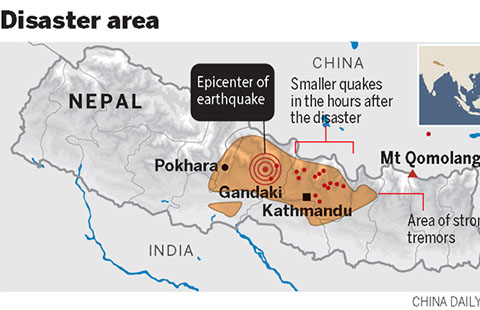
 |
|
This photo taken on July 13, 2012 shows a picturesque scene of Ulansuhai Nur in Bayannur, North China's Inner Mongolia autonomous region. The lake was refilled with 34 million cubic meters of water in March, as it had suffered an influx of agricultural, industrial and domestic sewage and was in short supply of clean water. [File Photo/Xinhua] |
The total area of lakes in North China's Inner Mongolia autonomous region dropped dramatically by 30.3 percent in the past 30 years mainly due to human activities, according to a survey report published in the US journal Proceedings of the National Academy of Sciences, Economic Information reported on April 27.
The survey was conducted by a research group, headed by Fang Jingyun, an academic with the Chinese Academy of Sciences, with the combined research methods of remote sensing image interpretation and field surveys.
The lake area has dropped rapidly from 4,160 square kilometers in 1987 to 2,901 square kilometers in 2010, according to the report.
The report said that about 145 lakes covering an area of more than 1 square kilometers have disappeared as of 2010 from 427 in 1987, accounting for 34 percent of the total number.
In the short term, the expansion and contraction of the lake area is a combined result of climate change and human activities, while some lakes have been affected greatly due to human activities, said Sun Biao, research associate with Inner Mongolia Agricultural University, who conducted water environment monitoring for 10 years.
The survey found that irrigation is the main reason for nearly 80 percent of the shrinking lake area in the agricultural and pastoral area in Inner Mongolia autonomous region, while coal exploitation is the reason for 64.6 percent of the contracted lake area in the pastoral area.
The disappearance of Inner Mongolian lakes is not unique in China.
More than half of the 50 plus lakes have contracted or disappeared since the 1980s in Nanchang, East China's Jiangxi province, said the offical microblog account of Water Resources Bureau of East China's Jiangxi province on June 18, 2014.
Also, Central China's Hubei province was once dubbed as"the province of a thousand lakes", as it had 1,332 lakes covering an area of 0.07 square kilometers in 1950s, among which there were 322 lakes covering an area of 3.33 square kilometers, youth.cn reported in September, 2012.
According to the report from youth.cn, the number of lakes covering an area of 0.07 square kilometers was reduced to 574, about a 56.9 percent drop since the 1950s, or about 15 lakes disappearing yearly, because of activities such as reclaiming farmland from lakes, real estate property development and rubbish dumping.
More than 200 lakes covering an area of 10 plus square kilometers contracted in China, and nearly 1,000 natural lakes disappeared due to reclamation, Economic Information citing statistical data reported.








